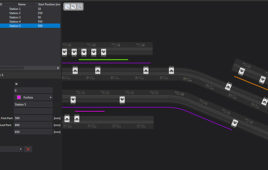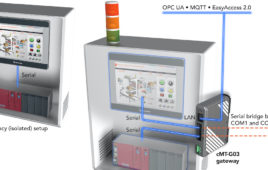 Nancy Maas Editor-in-Chief |
If you are like me, you long for a world where every device has wireless capability built in and a future where people can have data over unlicensed bands everywhere. The question is — will this be possible without some type of regulation or “spectrum etiquette” — any combination of steps and protocols a device must follow before accessing spectrum. The topic is one that is being hotly debated right now and there are merits on both sides.
M2M companies support spectrum etiquette as a result of the increasing number of unlicensed devices coming to market. Utility companies and railroads with internal unlicensed operations in the 915 MHz band insist safeguards are necessary to prevent interference in existing and future unlicensed frequencies.
Cellnet Technology Inc. and Hunt Technologies LLC recently told the FCC “An appropriate spectrum etiquette can provide an environment in which numerous users may operate in the same geographic area simultaneously, using only the minimum power and bandwidth they need for the particular application.” The Federal Communications Commission rejected Cellnet’s request that spectrum etiquette be imposed in the 915 MHz band. However, the agency conceded the approach may offer benefits.
The wireless broadband industry is fighting to prevent sharing conditions in unlicensed frequencies. The consumer electronics industry, plus others fear the policy will diminish innovation. The Wireless Communications Association International said it “continues to support voluntary frequency coordination and other best practices among unlicensed users, approaches that do not undermine the flexibility and technological innovation that has been critical to the success of unlicensed services over the past decade.”
So, is there a better way to allocate spectrum? And how do you propose an etiquette that accommodates WiFi and other users of unlicensed spectrum? Mandating users and their equipment vendors into a particular spectrum etiquette risks the loss of technological flexibility that has been critical to the success of unlicensed bands. Clearly, we need to focus on more efficient use of existing spectrum, and not just the allocation of such. In other words, we need to make better use of the spectrum that most of the time remains unused.
In order to avoid the risk of premature or unnecessary regulation, we need to look closely at the strengths and weaknesses of various spectrum etiquette models — a one size fits all may not work in this situation. We need to first identify and consider all available options and evaluate whether they will accommodate evolving services and devices in the unlicensed bands. A simple set of rules that will allow a common set of users to share a resource would be great. But more importantly, these rules must protect current users in the band and ensure that the band will continue to be available for future innovation.
Filed Under: M2M (machine to machine)




